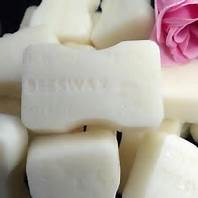Benzonates - Good Or Bad?




 v
v



Benzonates - Good Or Bad?
In 1990, William Jago wrote in his Manual of Forensic Chemistry and Chemical Evidence
The administration of benzonic acid, either as such or in the form of benzonate of soda (sodium benzonate), is highly objectionable and produces a very serious disturbance of the metabolic functions, attended with injury to digestion and health. There is only one conclusion to be drawn from this daya, and that is that in the interests of health both benzonic acid and benzonate of soda should be excluded from food products.
Nearly a century on, benzonic acid, sodium benzonate, and a host of related compounds such as parabens, are still widely used in foods and cosmetics, including most fizzy drinks consumed by children. They are antimicrobial preservatives. in otherw ords, they are chemicals that kill cells or prevent them from reproducing and infecting the food, toiletry, or cosmetic. They cause gastric irritation, numbing of the mouth, urticaria (nettle rash or hives) and they particularly affect asthma sufferers.This does beg the question why an increasing number of our children suffer from asthma despite the improvement in air quality in recent years.
The parahydroxy benzonates, or parabens, are widely used in cosmetics, including bath products such as moist tissue wipes, where the chemicals are likely to remain on the baby's skin. We have a collection of labels including one that lists no less than four different parabens and there are three other antimicrobial preservatives in one product. Surprising, the label plays up the fact that this particular toiletry contains mainly natural plant extracts.
Why use so many parabens? Simple - some dissolve in water while other are soluble in oil. Most cosmetics have both watery and oily ingredients blended together in the form of an emulsion, so preservatives must be used in such a way that both parts of the cosmetic are protected.
Additionally, Eu regulations limit the amount of parabens used to 0.4 percent of the finished product for each paraben used, up to a maximum of 0.8 percent. Manufacturers are required to produce cosmetics and toiletries that meet strict requirements for microbe contamination. Liberal use of preservatives help them to meet these requirements, which are five times more stringent for baby products, necessitating the use of even larger quantities of preservatives.
Reference: Cosmetic Unmasked: Dr Stephen & Gina Antczak
Articles-Latest
- Skin tags: Why they develop, and how to remove them
- So That’s Why Your Skin Gets Crepey As You Get Older
- Eye Infection from False Eyelashes
- Teeth stain removal and whitening solutions
- Benefits of collagen for skin
- Why vitamin E should be part of your skincare regime
- Can gray hair be reversed?
- Hair loss affects 1 in 10 women before the menopause – here’s how to treat it
- Conscious ageing and Black skin: What happens when Black does crack?
- Your skin color may affect how well a medication works for you — but the research is way behind
- The C word Cancer
- Astringents
- How does light therapy work? The science behind the popular skincare treatment
- The Most Offensive Fashion Police Criticisms of All Time
- Everything you need to know about lip filler migration, as told by the experts
- Pig semen and menstrual blood – how our ancestors perfected the art of seduction
- Everything you need to know about benzoyl peroxide
- We've bleached, relaxed, and damaged our hair to make ourselves look more white
- Will this be the year that facial filler is cancelled?
- Shock of the old: 10 painful and poisonous beauty treatments
Cosmetic ingredients
LOGIN
Who's On Line
We have 66 guests and no members online
Articles-Most Read
- Home
- White Bees Wax
- Leucidal
- Cosmetic Preservatives A-Z
- Caprylyl Glycol
- Cosmetics Unmasked - How Safe Are Colorants?
- Cosmetics Unmasked - Choosing Ingredients
- Cosmetics Unmasked - Colorants And Fragrances
- EcoSilk
- Toxic Beauty - Who's Looking At Cosmetics?
- Cosmetics Unmasked - Fragrances
- Microbes and Cosmetics
- Chemicals Lingering In The Environment
- Yellow Bees Wax
- Microbes and Safety Standards
- Potassium Sorbate
- Toxic Beauty - Hazardous To Your Health
- Synthetics In Cosmetics - The Industry Fights Back
- What's Happening in the USA - Cosmetic Regulations - Toxic Beauty
- Fresh Goat's Milk Soap
- Active Ingredients
- Cosmetics Unmasked - Listing Cosmetics
- Toxic Beauty - Cocktails and Low Doses
- Natural Waxes A-Z
- Natural Butters A-Z



